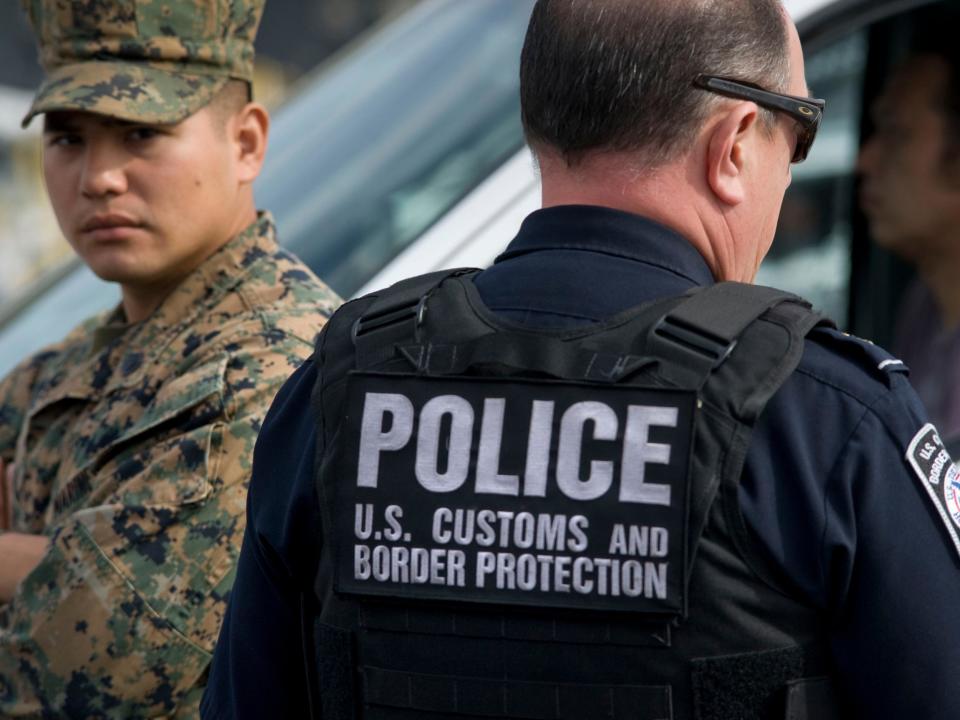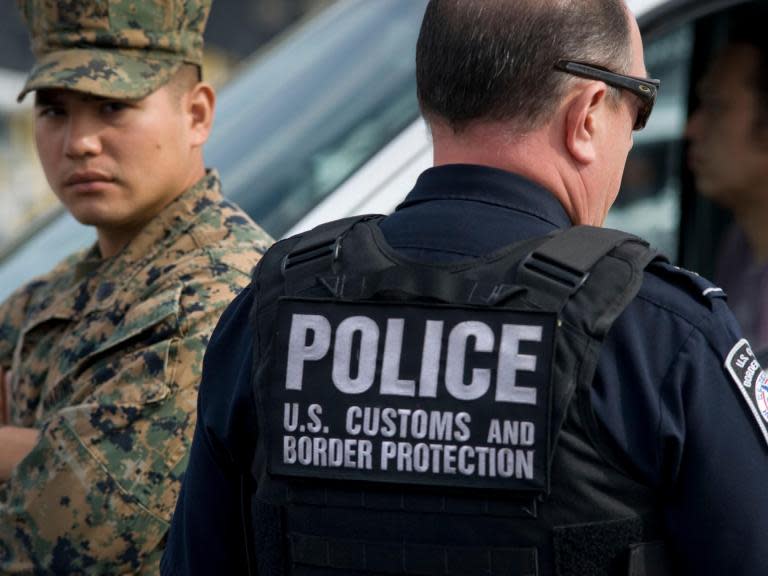Cost of US troops being deployed to Mexico border could reach $1bn, Trump administration admits
The cost of Donald Trump's deployment of active-duty troops and National Guard forces to the US-Mexico border could total an estimated $1bn by the end of the fiscal year, according to new figures released by the US Department of Defence.
Mr Trump said on Tuesday during his State of the Union address that he had ordered a new infusion of 3,750 active-duty troops to the border to prepare for a “tremendous onslaught”.
The president said Mexican cities, in order to remove Central American migrants in their communities, “are getting trucks and buses to bring them up to our country in areas where there is little border protection”.
Mexican authorities recently expedited the journey of a caravan of Central American migrants headed toward the border crossing at Eagle Pass, Texas, using a fleet of buses.
On Wednesday, the Pentagon said a small contingent of troops, including military police, medical personnel and engineers, would reposition to Eagle Pass to harden ports of entry.
According to the Pentagon, the additional active-duty forces deployed to the border will conduct mobile surveillance for Customs and Border Protection and install razor wire.
The contingent brings the number of active-duty troops currently there to about 4,350, the Defence Department said, down from a high of about 5,900 after Mr Trump ordered the deployment in late October.
An additional 2,200 or so National Guard forces also remain there, stemming from orders Mr Trump issued last April. Taken together, the contingent of forces on the border numbers about 6,550, including both active-duty and National Guard, according to official figures.
If the numbers hold roughly steady, estimates indicate that the cost of the National Guard and active-duty deployments together could reach about $1bn, measured from the time they started last April and October, respectively, through the end of the government's fiscal year on 30 September 2019.
That estimate comes from combining figures the Department of Defence has released and estimates from outside experts to fill in the gaps.
[[gallery-0]]
Vice Admiral Michael Gilday, director of operations for the Joint Chiefs of Staff, said in testimony to the House Armed Services Committee on 29 January that the National Guard portion of the deployment is projected to cost $550m by the end of September.
The active-duty deployment, meanwhile, already cost $132m from its start in late October through the end of January, Mr Gilday said. He said he couldn't give an estimate of the active-duty deployment's cost for the remainder of the fiscal year.
The cost of the active-duty deployment for the remainder of the fiscal year is difficult to estimate. Outside experts pegged it between $316m and $460m, though they cautioned that with unstable troop numbers and changing tasks, as well as a lack of full budget data from the Pentagon, the figures are hard to pinpoint with accuracy.
Travis Sharp, a research fellow at the Centre for Strategic and Budgetary Assessments, estimated that it would cost between $316m and $365m if the numbers fluctuate roughly the way they have been since late October. He arrived at the estimate by calculating the daily cost of the active-duty deployment so far, based on the figures the Pentagon has released, and multiplying that by the number of days remaining in the fiscal year.
Mark Cancian, a senior adviser at the Centre for Strategic and International Studies, estimated that the active-duty deployment would cost about $400m for the remainder of the fiscal year, if troop levels remain where they are now.
All told, the cost of the deployments would approach $1bn at the minimum estimate by the end of September, as long as the troop presence and activity level aren't altered significantly.
The figure is within the range of at least one past deployment. President George W Bush deployed up to 6,000 National Guard troops to border states during Operation Jump Start from 2006 to 2008 at a cost of $1.2bn, according to the Government Accountability Office.
A year-long National Guard deployment of up to 1,200 troops by President Barack Obama from 2010 to 2011, known as Operation Phalanx, cost about $145m, the office reported. Because the report was released before the end of the operation, part of the cost figure is an estimate.
The possible $1bn price tag for the border deployment through the end of September is a small slice of the $716bn defence budget and a tiny expenditure compared with the amount of money the Pentagon has spent on other military missions.
As of last March, for example, the Pentagon had spent more than $1.5tn on the wars in Afghanistan, Iraq and Syria since the 9/11 attacks, according to a department report.
“This is much more of a political issue than a fiscal issue, in that even if the total cost comes to a billion dollars... that's in a more than $700bn budget,” Mr Cancian said. “That's not even one per cent.” He said the question isn't whether the military can afford the deployment, but rather whether it's worth doing.
While some costs for the deployments are likely to come from the existing budget, some will not and likely need to be shifted from other areas, Mr Cancian said.
The cost of the border deployment has attracted the ire of Trump's critics, who have described it as a political stunt rather than a necessary response to a national security crisis.
“The president is poised to waste well over $1bn on this dubious mission, as he sends thousands of active duty service members back to the border to lay concertina wire, change tires, and shovel manure,” Anthony Brown, a retired colonel in the US Army Reserve and a member of the House Armed Services Committee, said in a statement.
“President Trump's use of our men and women in uniform as toy soldiers in this fraught political game is deeply damaging to our ability to respond to real threats.”
Defenders of the president emphasise that the cost of the deployment and the border wall is small in the grand scheme of US government spending, and say the situation on the border presents a crisis – one that Mr Trump described on Tuesday as “a threat to the safety, security, and financial well-being of all Americans”.
Speaking at a hearing last week, Representative Mike Rogers said the military had been sending troops to the border since the Alamo and, referring to the dispute over the border wall funding, expressed exasperation that Congress was fussing “over $5.7bn in fencing and it cost us $11bn to shut the government down”. But he said the government needs to provide more funding for the Department of Homeland Security, which includes CBP, rather than using Department of Defence resources to back up border operations.
“What's it going to take for us to not have to continue this pattern?” Mr Rogers said. “We're going to have to adequately fund the Department of Homeland Security, instead of continually reaching into DoD to subsidize that department. It has been inadequately funded since its inception by Republican and Democrat administrations. That has to be addressed.”
Washington Post


